The Blue & Red Houses of Frida Kahlo & Leon Trotsky
I’m very much in two worlds simultaneously right now. I’ve recently returned from an amazing week in Coyoacan with Gabriela Ortiz, following up with her and other friends in Mexico City on the success of our Los Angeles International New Music Festival this past July and planning next steps for the future. At the same time I’m also wrapping my head around my new post as artistic advisor to the Hanoi Philharmonic Orchestra and planning the first concerts of the Hanoi New Music Ensemble (probably its working title for now).
Glad to be based in Los Angeles, where the question for dinner can easily boil down to pho noodle soup? Or tacos?
When I’d booked my flight to Mexico I had no idea Jan and I would both receive invitations from Hanoi. Fortunately, Gabriela was also under some compositional deadlines and easily understood I needed time to start putting a lot of thoughts together.
And so there I was in Coyoacan, dreaming about Vietnam while reading my 60th birthday present to myself. I would take The Old Gringo by Carlos Fuentes (over time I’m reading his entire output, at the rate of every other book I read) and read it in the Plaza Hidalgo, one of the best memories I have.
One day Gabriela’s husband, Alejandro Escuer, dropped me off on his way to UNAM. Ale gave me good walking directions so he didn’t have to go out of his way. The weather was a beautiful late summer morning, a perfect balance of sunshine and puffy, floating clouds that would, usually on schedule, bring late afternoon rain. As I was walking, a prominent sign caught my attention.
Jan and I had in fact visited Trotsky’s home on our very first trip to Mexico City in 2001, when we met Ana Chavez, the daughter of composer Carlos, who also lived in Coyoacan. But with things communist on my mind as I thought about Vietnam, I followed my hunch, saw that Trotsky’s house was not that far away, knew that Frida Kahlo’s Blue House would also not be far and decided on a big diversion. Fuentes’ Old Gringo could wait!
I’ve been reading a lot of history the last year, in the back of my mind perhaps anticipating that Hanoi would eventually act on the discussions we’d had about next steps and the best way to move forward. Because to study Vietnam means you need to study China, Russia, the Soviet Union, the Communism of Marx and Lenin, Mao, Paris and Washington, European colonialism, imperial Japan, Uncle Ho, seven American presidents. You get the point. It’s a big story, which is what I live for.
One thing I learned on this trip to Mexico City is that the influx of immigrants from Spain, escaping the Fascist disaster of Franco’s victory in the Spanish Civil War, shapes the cultural life of Mexico to this day. And this huge exodus allowed Stalin to easily plant Soviet operatives in Mexico who would eventually drive an ice-pick into Trotsky’s head.
History is never inevitable. Choices get made in the dark. And one of the great “what if” questions, for me, remains about the power struggle after the death of Lenin. What if Trotsky had prevailed and Stalin had been turned aside? We’ll never know.
History may not be culture, but it does create the narrative that provides the background of what composers and authors and painters and architects and all society tries to interpret into, hopefully, common sense. Easier to think about than to do.
I thought I’d provide you with some photos of Trotsky’s house, now a wonderful and informative museum that is very much worth your time. Unlike Frida Kahlo’s house just a few blocks away, Trotsky’s home isn’t crawlng with devoted tourists, so the balance between the two is ideal.
Though I’m not a historian, one thing I know is that had Trotsky not had an affair with Frida Kahlo, he might have stayed in the much more secure Casa Azul on Londres Street a few blocks away. For various reasons, some were political differences with Diego Rivera, it is more to the point to acknowledge that Trotsky was thrown out by Rivera for his amorous attraction to Frida Kahlo.
And so, dreaming of Trotsky, Lenin, Stalin, Mexico, its bloody revolution, Rivera, Kahlo, the Vietnam War and now our roles in Hanoi, in the back of my mind memories of Carlos Chavez surfacing like a contrapuntal thread (he also lived close by), I walked to La Casa Azul.
Frida Kahlo is much more than an artist. She’s a symbol, a phenonemon, and an icon not only of Mexico but for women around the world (and let me include their fathers, husbands, brothers and sons as well). The line to gain entrance was long, not interminable, but long. On a Wednesday morning 15 minutes before opening. What my photos can’t give you is the sense of so many women, in particular, having finally arrived at their pilgrimage destination at La Casa Azul.
And I experienced a moving moment in her studio. Three young women, who might easily have been art students, kneeled down quietly, in front of her work desk area. They were quiet and reverential. Softly taking pictures, by unobtrusive observation I could feel the bigger picture of Kahlo’s magical hold on our collective imaginations.
I’m writing this on September 17th, the second birthday of my blog, which I began on the birthday of my mother, who I trust is now in heaven, in the Pure Land. But today is also the day of Kahlo’s life altering tram accident that broke her body, literally, for the rest of her life. We all live in sympathetic awe of her biography, which reads like a litany of physical pain and emotional disappointment. Frida Kahlo was never sick, she was, as she herself described it, broken.
Some homes exert an energy that becomes unavoidable. Though still in family hands, I feel it whenever I visit the home of Arnold Schoenberg in Los Angeles. Or Monet’s home in Giverny, Sun Yat Sen’s in Shanghai, Monticello in Virginia for Thomas Jefferson. Kahlo’s house is, for me, at the top of the list.
As I wandered around this sacred space (Kahlo’s ashes are at La Casa Azul), pondering the synchronicity of my mother’s birthday with Kahlo’s accident, I realized something that had kicked up in my mind at Trotsky’s house. When Jan and I had first visited these homes, we hadn’t recorded any Chavez. We were to meet Tambuco in Plaza Hidalgo after meeting Ana Chavez. We were dreaming.
So the past floated by on those clear blue skies of a Cielito Lindo morning. Success under our belt from the Grammy Awards (for projects with the music of Carlos Chavez, William Kraft, and Gabriela Ortiz, all connected to and shared with friends in Mexico City), I dreamt again recalling Ana Chavez talking with great familiarty about Rivera, Siqueiros, Tamayo and Kahlo. Her father would call Kahlo “Fridita”, which hit me hard at La Casa Azul.
I felt like the book I was reading in Plaza Hidalgo, that as I turned 60 this old gringo was home in Coyoacan, part of a world where I finally belonged, dreaming of a new reality for musical Vietnam, at Trotsky’s house, and revived by how music can still inspire. That old cliche of music being the international language was floating in my Mexican cloudscape. The charming proverb mi casa es su casa had come true.
Inspiration.
It’s hard to put into words but I know it when I hear it, see it, taste it, feel it, hug it, and read it when authors and poets get words right. In the next few weeks I’ll be heading back to Southeast Asia, another new journey to old friends.
So September 17th is always a special day. I think today of the release of both my mom with the synchronicity of her birth with Kahlo’s accident. Release, finding an all’s well that end’s well, takes a long time to locate on the map of one’s life. I found some of that in Coyoacan wandering with purpose around the energy of Trotsky and Kahlo.
And so I thought I’d end this post with Kahlo’s last painting.
Sid Caesar wisely remarked that laughing and crying are the same emotion. That Frida Kahlo, after a broken physical life and a difficult everything that seemed to follow her, would leave us with “Viva La Vida” on her last painting gives me something that I’ll listen to for as long as I live.
Inspiration for life’s journey. Viva La Vida! Viva Kahlo!
Best, best, best,
Jeff







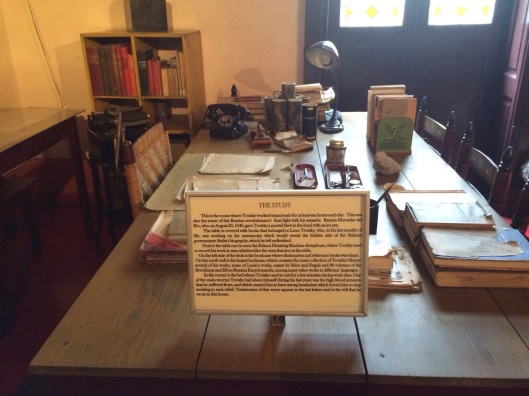


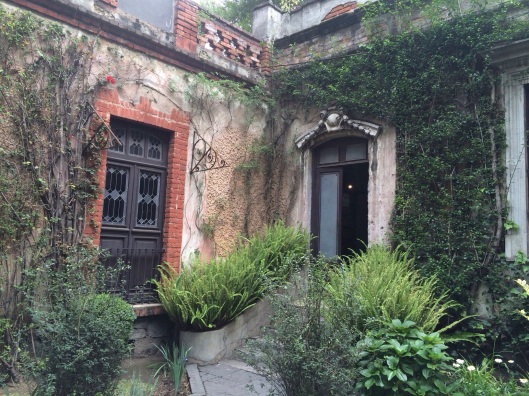
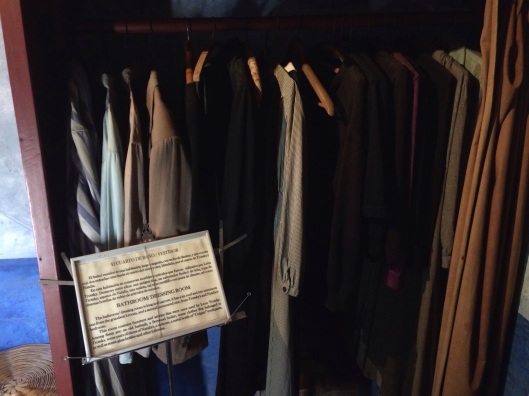
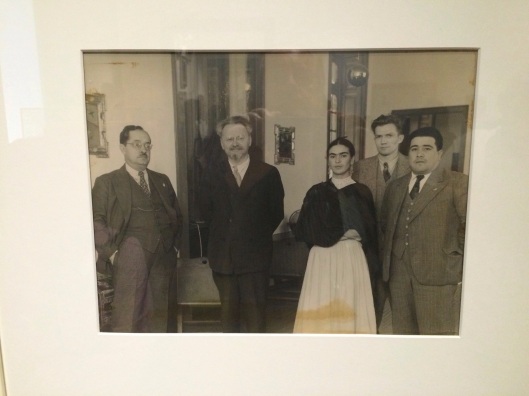







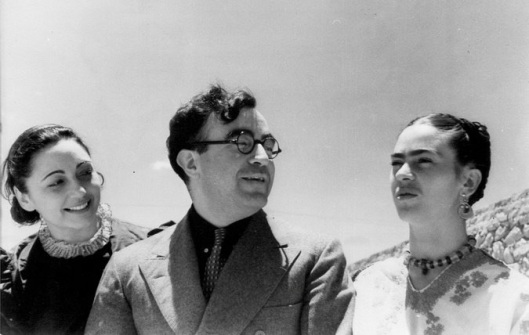


No comments:
Post a Comment